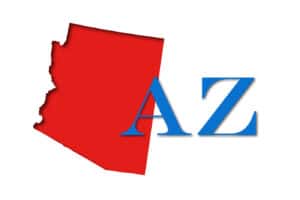LIHTC

2012 Summer Institute Power Point Presentations and Materials Now Available!
NH&RA is pleased to offer the Power Point presentations, relevant articles, reports, memos, etc. from our recent 2012 Summer Institute and New Markets Tax Credit Symposium, which was held July 25-28, 2012 at the Harbor View Hotel on Martha’s Vineyard in Massachusetts.

OHFA to Host Roundtable on Expected Useful Life Standards
The Ohio Housing Finance Agency (OHFA) will host an architectural technical roundtable to gather comments and suggestions related to Expected Useful Life standards.

Ohio Announces 2013 Qualified Allocation Plan
On July 18, the Ohio Housing Finance Agency (OHFA) Board approved the final draft of the 2013 QAP. The changes made from the 2012 QAP were meant to improve clarity throughout the document, create a more transparent scoring process and integrate external suggestions to avoid unintended consequences.

Montana Hosting LIHTC Annual Compliance Training
The Montana Board of Housing (MBOH) will be hosting its annual Low Income Housing Tax Credit Compliance Training September 13-14, 2012.

Arizona Amends Compliance Training Requirements for LIHTC Participants
The Arizona Department of Housing (ADOH) has made a change to its Compliance Training requirements, as outlined in the 2012 Qualified Allocation Plan (QAP), for participants in the LIHTC program.

Minnesota Housing Multifamily Compliance Team Staff Changes
Minnesota Housing’s Multifamily Division has restructured the program compliance department by merging the Housing Tax Credit, HOME, and deferred loan monitoring staff into one consolidated compliance team.

New York State HCR Announces Next Round of Capital Funding
New York State Homes and Community Renewal (HCR) has announced the availability of its latest round of funding for the Low-Income Housing Credit (LIHC), Housing Trust Fund (HTF), HOME Program, and State Low-Income Housing Tax Credit Program (SLIHC).

Michigan Notice of Funding for 2013 LIHTC
The Michigan State Housing Development Authority (MSHDA) announced the submission deadline for its first round of competitive funding for 2013 Low Income Housing Tax Credits as August 15, 2012 at 5:00 p.m.

CHFA to Host Two Public Hearings for the 2013 QAP & Community Roundtable Event
The Colorado Housing and Finance Authority (CHFA) will be hosting two public hearings to receive input from the public for developing its QAP for 2013.

Pennsylvania Releases Draft of 2013 QAP
The Pennsylvania Housing Finance Agency (PHFA) released a draft of its 2013 Qualified Allocation Plan (QAP). Notably, PHFA plans to accept applications in two cycles.

Recommended Practices for Determining Demand
The National Council of Housing Market Analysts (NCHMA) has separate definitions of overall market demand and project specific demand Market demand is the total number of households in a defined market area that would potentially move into any new or renovated housing units. Market demand is not project specific and covers all renter households and income levels. Components of demand vary and can include household growth; turnover, substandard dwelling units, rent over-burdened households, and demolished housing units.

Best Practices For Rural Market Studies (DRAFT)
Several important differences between rural and urban market studies include market area definitions, evaluation of comparables, and consideration of demand. On the surface, it seems like defining a rural market area might be purely a matter of opinion, but well-established analytic tools are available to assist market analysts. Evaluating comparables, understanding how the proposal would fit into the market, and understanding what the demand calculations really mean are more a matter of experience.